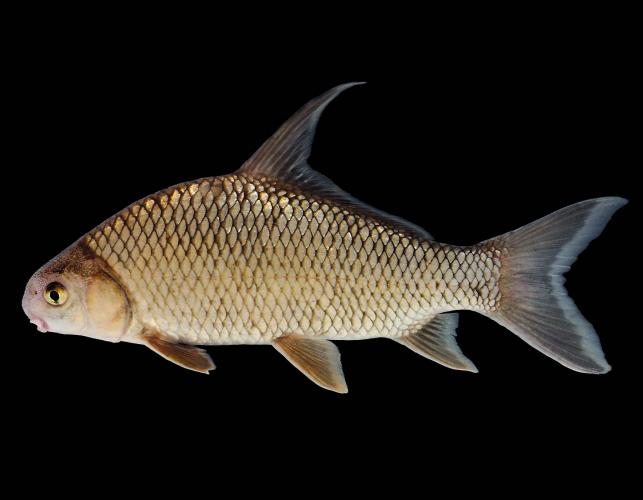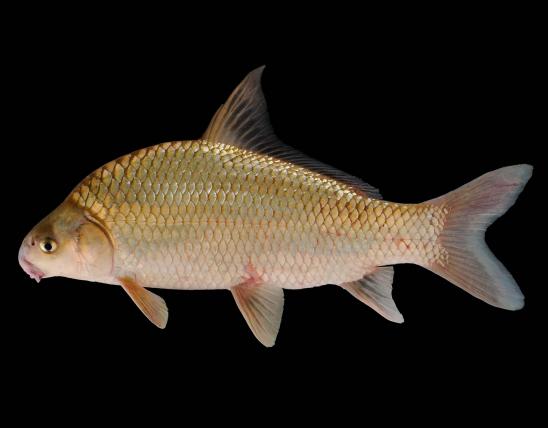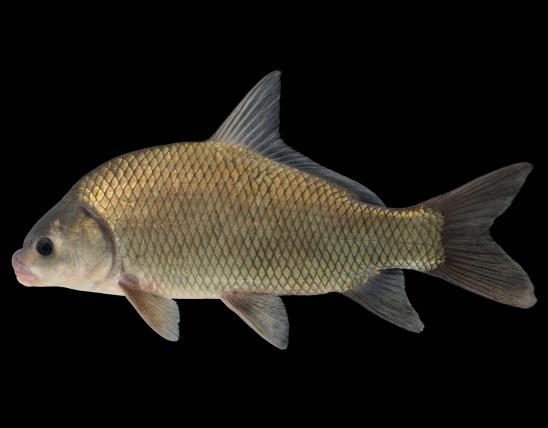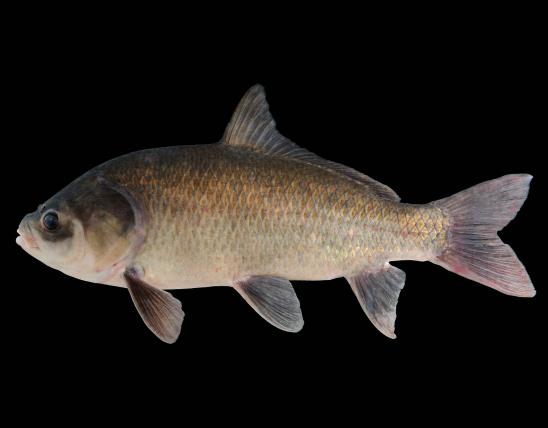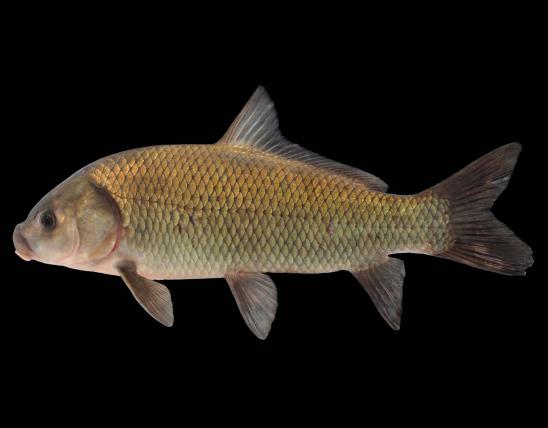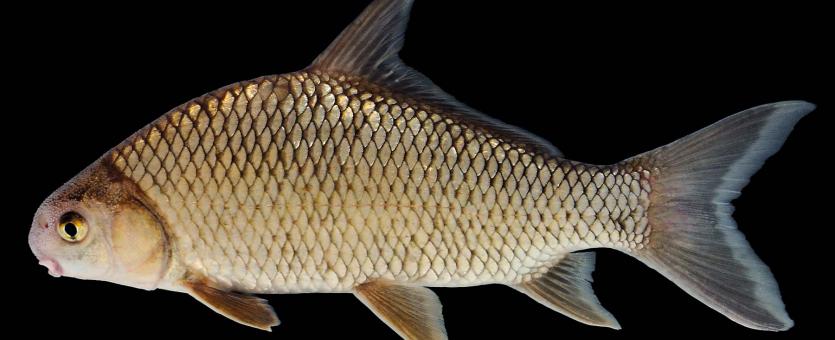
The highfin carpsucker is a silvery sucker with a deep, rather thick body and a long, sickle-shaped dorsal fin. The eyes are moderately large and closer to the tip of the snout than to the rear margin of the gill cover. Like the river carpsucker, there is a nipple-like projection at the middle of the lower lip (the similar quillback lacks this projection).
The lower fins are whitish (unlike buffalofishes, which have the lower fins dark). The coloration is about the same as the river carpsucker: the back is brown or slate with silvery reflections; the sides are silvery, the scales rather prominently dark-edged. The belly, undersurface of head, and lips are milk-white. The dorsal and tail fins are dusky; the lower fins are white, sometimes with a faint dusky or orange-yellow tinge. Breeding males have larger tubercles than the river carpsucker, however, and tubercles are present over most of the head, body, and fins.
Similar species: Distinguished from the very similar river carpsucker by the following:
- The first principal ray of the dorsal fin is very long, reaching far beyond the back of the dorsal fin base (unless broken off).
- The body is deeper and thinner than the river carpsucker, its width going more than 2 times into its depth.
Adult length: usually 9–12 inches. A small carpsucker, seldom exceeding a length of 12 inches or a weight of 1 pound.
The most recent records of this fish from Missouri are from the Meramec River, Gasconade River, Lake of the Ozarks and the lower Osage River, and Lake Taneycomo. Small populations may still persist in other Ozark drainages. There are no recent records from prairie streams of northern Missouri or from the Bootheel lowlands.
Habitat and Conservation
The highfin carpsucker is rare in Missouri and may have become rarer in recent decades. Most records for this fish are more than 50 years old. This fish prefers clearer waters and firmer bottoms than the river carpsucker. It is much less tolerant of turbidity and siltation than other carpsuckers. This intolerance probably explains its present restricted distribution in our state.
This species has the curious habit of skimming along near the water’s surface with its dorsal fin and part of its back exposed, and it frequently jumps clear of the water.
Food
Forages on the bottoms of streams for small aquatic invertebrates, such as crustaceans, larval insects, and mollusks, and algae.
Status
A Species of Conservation Concern in Missouri. Listed as imperiled in our state, it is very vulnerable to extirpation from within our borders.
Life Cycle
Apparently this species spawns in spring and into midsummer in rivers over deep, gravelly riffles. The maximum life span is probably about 4 years.
Human Connections
Carpsuckers are rarely taken on hook and line and are little valued as food. A few carpsuckers are marketed by commercial fishers along the Missouri and Mississippi rivers, but the highfin carpsucker is too rare to be commercially important.
Fish are an amazingly diverse group of animals on planet Earth. Counting the lampreys, sharks, and their relatives, plus all the bony fish, there are some 28,000 species of fishes alive today. The study of fish is called ichthyology.
In addition to their importance as food, fishes intrigue us in home and public aquariums, and many human cultures have viewed fishes as religious symbols, as deities, and as subjects in myth, art, literature, and films.
Ecosystem Connections
The highfin carpsucker’s need for consistent sandy or gravelly substrates means that it struggles to survive when streams are degraded by siltation. Siltation is usually caused when soil is disturbed (as by construction or agricultural practices, or when cattle are allowed to trample streambanks) and then erodes into streams.
Suckers are one of the dominant groups of large fishes in Missouri waters. In many streams, their total poundage may exceed that of all other fishes combined. Each kind of sucker has its own particular habitat preference.
The fleshy, protrusile lips of suckers make them perfectly equipped for sucking up aquatic invertebrates from the bottom. The highfin carpsucker must compete with catfishes and carp for food.
Small suckers, including the eggs and young of the highfin carpsucker, are an important food source for other animals, including game fishes.
